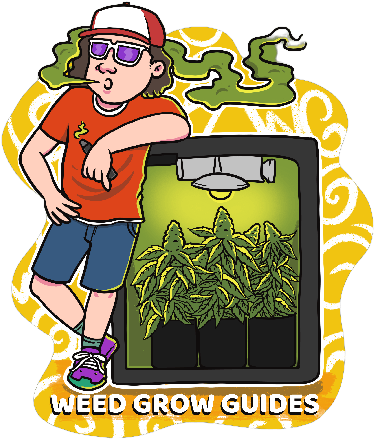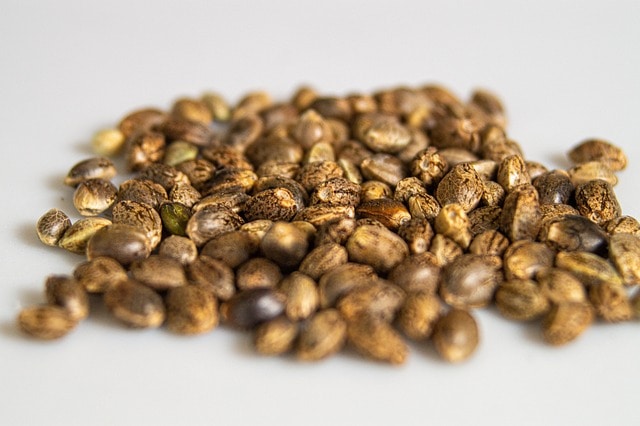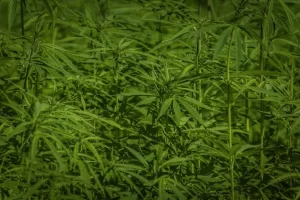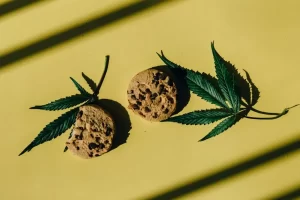Your Complete Step-By-Step Guide to Building the Perfect Grow Space
An efficient marijuana grow room setup is the cornerstone of successful cannabis cultivation. Whether you’re growing for personal use or for business, a well-designed grow room can make or break your harvest. In this comprehensive guide, we will take you through all the necessary steps to set up a marijuana grow room that yields high-quality buds without draining your bank account.
Legal Considerations
Before we delve into the nitty-gritty, it’s important to be aware of the legal framework surrounding marijuana cultivation in your jurisdiction. Many places have specific laws, including limits on the number of plants you can grow and required licenses. Make sure you understand and comply with all regulations.
The Essentials of a Marijuana Grow Room
A functional grow room requires several key components: lighting, ventilation, temperature control, and more. In this section, we will break down each element and explain why it’s crucial to the overall setup.
Choosing the Right Location
One of the most crucial decisions you’ll make in your marijuana grow room setup is selecting the right location. This choice impacts not only the efficiency of your grow room but also the quality of your cannabis harvest.
Indoor vs. Outdoor
While outdoor growing offers the advantage of free sunlight, an indoor marijuana grow room setup gives you greater control over the growing conditions. This level of control is crucial for optimizing factors like light, temperature, and humidity, which significantly influence your yield and the quality of your buds.

Space Considerations
The amount of space you allocate for your grow room will directly affect how many plants you can cultivate. Remember, cannabis plants need room to grow both vertically and horizontally. A cramped space can lead to issues such as mold growth and poor air circulation.
Accessibility
Ensure that the location you choose is easily accessible. You’ll be visiting this room multiple times a day, so it should be easy to get to. Additionally, consider the accessibility of water and electricity sources, as you’ll need both for a successful grow room setup.
Security
If you’re growing cannabis, security should be one of your top priorities. Make sure the location you select is discreet and secure. Some growers invest in security systems, including cameras and alarms, to safeguard their investment.
Ventilation and Air Circulation: The Lungs of Your Grow Room
When setting up a marijuana grow room, one of the most frequently overlooked yet crucial factors is ventilation and air circulation. Proper air movement is absolutely essential for cultivating high-quality cannabis plants. In this section, we’ll walk you through the key elements of ventilation and why it’s the “lungs” of your grow room setup.
Why Is Ventilation Important?
- Temperature Control: Proper ventilation helps maintain an ideal temperature for cannabis growth.
- Humidity Regulation: Efficient air circulation helps to manage the moisture levels in the grow room.
- CO2 Replacement: Plants need a continuous supply of fresh CO2 for photosynthesis.
- Odor Management: Cannabis plants produce a strong aroma that can be managed through adequate ventilation.
- Disease Prevention: Good air circulation can help prevent the onset of mold and other airborne diseases.
Types of Ventilation Systems
- Passive Ventilation: This system relies on natural airflow and is usually utilized in smaller grow setups. It involves strategically placed air intake and exhaust holes.
- Active Ventilation: For larger operations or places with less natural air movement, fans and duct systems are used to circulate air actively.
- Filtered Ventilation: In sensitive setups, ventilation systems with carbon filters can help eliminate odors and filter out potential pathogens.

Components of a Good Ventilation System
- Exhaust Fans: Positioned at the top of the room to remove hot air.
- Intake Fans: Situated lower down to bring in fresh, cool air.
- Oscillating Fans: These circulate air around the plants themselves.
- Ducting: Used in larger systems to channel air in specific directions.
- Carbon Filters: These can be added to remove odors and purify the air.
Best Practices
- Size Matters: The size of your ventilation system should be directly proportional to the size of your grow room.
- Fan Speed Controls: Adjustable fans let you control the speed based on current conditions.
- Regular Maintenance: Clean and inspect your ventilation system regularly to ensure it operates efficiently.
- Climate Monitoring: Use hygrometers and thermometers to continuously monitor climate conditions.
- System Redundancy: Always have backup fans and batteries to keep the system running in case of failure.
Common Mistakes to Avoid
- Ignoring Negative Pressure: A slight negative pressure is good, as it helps to contain odors. However, excessive negative pressure can stress plants.
- Using Low-Quality Fans: Invest in good quality, durable fans to avoid frequent replacements.
- Lack of Regular Maintenance: Dust and debris can seriously affect the efficiency of your ventilation system. Regular cleaning is a must.
Conclusion
Effective ventilation and air circulation are vital for a successful marijuana grow room setup. It not only improves the health and yield of your cannabis plants but also creates an environment that’s easier to control and manage.
Lighting Systems Explained: Illuminating Your Path to High-Quality Cannabis
Perhaps no other factor has as much impact on your cannabis crop as the lighting system you choose. In nature, plants rely on the sun to provide a full spectrum of light. Indoor growers, however, must replicate this as closely as possible to achieve a high-yield, high-quality harvest. In this segment, we’ll dive deep into the types, techniques, and tips for optimizing the lighting in your marijuana grow room setup.
Why is Proper Lighting Crucial?
- Photosynthesis: Adequate and proper lighting is vital for the photosynthesis process, where plants convert light into energy.
- Growth Cycles: Cannabis plants have different lighting needs for the vegetative and flowering stages.
- Yield: The amount and quality of light directly correlate with the yield of your harvest.
- Energy Efficiency: Modern lighting solutions can offer great output without a significant energy drain, which is crucial for large-scale operations.
Types of Grow Lights
- High-Pressure Sodium (HPS): These lights are extremely efficient and often used during the flowering stage. However, they generate a lot of heat and may require additional ventilation.
- Metal Halide (MH): Great for the vegetative stage, MH lights offer a spectrum that promotes lush, green growth.
- Compact Fluorescent Lights (CFL): These are suitable for small-scale grows and are less efficient than HPS or MH lights.
- Light Emitting Diodes (LED): LED grow lights are versatile and energy-efficient, suitable for both vegetative and flowering stages.
- T5 Grow Lights: These are fluorescent lights that are generally used for clones and seedlings.

Key Features to Consider
- Spectrum: Different stages of growth require different light spectrums. Some lights offer full-spectrum capabilities.
- Intensity: The power of the light, usually indicated in watts, affects how well your plants will grow.
- Coverage: Ensure the light covers all plants evenly, avoiding hotspots or areas of low light.
- Energy Efficiency: More efficient lights will cost less to run.
Best Practices
- Height Adjustment: As plants grow, the height of your lights will need to be adjusted regularly to maintain optimal intensity and coverage.
- Light Timers: Automated timers can make it much easier to manage light cycles, especially if you’re growing different strains with varying needs.
- Reflective Materials: Using reflective materials on the walls can help distribute light more evenly throughout the grow room.
- Regular Maintenance: Dust and dirt can reduce the efficiency of your lights. Keep them clean to ensure optimal performance.
Common Mistakes to Avoid
- Overlighting: Too much light can lead to issues such as light burn and nutrient deficiencies.
- Inconsistent Light Cycles: Inconsistency in light cycles can stress the plants and even cause them to hermaphrodite.
- Ignoring Dimming Features: If your lights have dimming capabilities, use them to simulate natural light conditions.
Conclusion
Choosing the right lighting system is a pivotal decision in the marijuana grow room setup process. From the type of light to its intensity and coverage, every detail matters when it comes to maximizing yield and quality. Invest wisely, monitor regularly, and adjust as needed to illuminate your path to a high-quality cannabis harvest.
Temperature and Humidity Control: The Climate Keys to Your Cannabis Castle
Managing temperature and humidity levels is fundamental for any marijuana grow room setup. Correct climate control isn’t just about keeping your plants comfortable; it’s about providing the optimal conditions for growth and development at every stage of the plant life cycle. From seedling to flowering, we’ll guide you through the essentials of temperature and humidity control for cannabis cultivation.
Why are Temperature and Humidity Important?
- Plant Health: Both too high and too low temperatures or humidity levels can lead to various plant health issues, including mold, root rot, and nutrient deficiencies.
- Resin Production: Optimal climatic conditions can maximize the production of cannabinoids, terpenes, and flavonoids, resulting in higher-quality buds.
- Energy Efficiency: Properly managed climate control systems are generally more energy-efficient, saving you money in the long run.
Ideal Conditions by Growth Stage
- Seedlings: 75-80°F and 65-70% Humidity
- Vegetative: 70-85°F and 40-60% Humidity
- Flowering: 65-80°F and 40-50% Humidity

Tools for Climate Control
- Thermostats: Digital thermostats can provide precise temperature control.
- Hygrometers: These measure the level of humidity in the room.
- Humidifiers/Dehumidifiers: These help in increasing or decreasing the room’s humidity levels.
- Air Conditioners: For larger setups, an A/C unit can provide more comprehensive temperature control.
- Heaters: In colder climates, a heating unit may be necessary to maintain ideal temperatures.
Best Practices
- Monitoring: Consistently monitor temperature and humidity using digital devices that provide accurate readings.
- Air Circulation: Adequate ventilation can aid in maintaining both temperature and humidity levels.
- Automation: Automated climate control systems can make it easier to maintain constant levels, even when you’re not around.
- Zoning: For larger grow rooms, consider setting up zones with different climate controls to tailor conditions to different strains or growth stages.
- Calibration: Ensure all devices are calibrated regularly for accurate readings.
Common Mistakes to Avoid
- Ignoring Microclimates: Different areas in your grow room can have varying conditions. Ignoring these microclimates can lead to uneven growth or disease.
- Lack of Backup Systems: A failed climate control system can wreak havoc quickly. Always have a backup in place.
- Overcompensation: Drastically changing the environment can stress plants. Make adjustments gradually.
Conclusion
Understanding and controlling the temperature and humidity in your marijuana grow room setup are crucial for producing high-quality, abundant yields. By investing in the right tools and following best practices, you can create an environment where your cannabis plants not only survive but thrive.
Watering and Irrigation: Quenching the Thirst for High-Quality Cannabis
Water is the lifeblood of any plant, and cannabis is no exception. While it might seem like a straightforward task, watering your marijuana plants requires attention to detail and a well-thought-out plan. From the type of water you use to the methods and timing of irrigation, everything plays a crucial role. This guide aims to demystify the complexities surrounding watering and irrigation for your marijuana grow room setup.
Why is Proper Watering Essential?
- Nutrient Uptake: Water carries essential nutrients from the soil to the plant cells.
- Growth and Development: Adequate watering promotes healthy root and leaf development.
- Stress Avoidance: Overwatering or underwatering can lead to plant stress, affecting yield and potency.
Types of Water to Use
- Tap Water: Often contains chlorine, which can be harmful to plants but can be left to sit out to dissipate.
- Filtered Water: Removes contaminants and is generally more beneficial for plant health.
- Rainwater: Free and natural, but must be checked for quality.
- Distilled Water: Lacks minerals but can be useful in some setups.
Methods of Irrigation
- Hand Watering: Traditional and simple, but can be time-consuming and inconsistent.
- Drip Systems: Automated and efficient, but initial setup can be complex.
- Flood and Drain: Good for hydroponic setups, this method requires careful timing.
- Sprinkler Systems: Useful for larger operations, but risk of overspray exists.
Best Practices
- Consistency: Create a watering schedule and stick to it.
- Monitoring: Use soil moisture meters or simply a finger test to gauge when plants need water.
- Water Quality: Test your water regularly to ensure it is free from harmful substances.
- pH Levels: Optimal pH levels for cannabis usually fall between 6.0 and 7.0. Test and adjust as necessary.
Tools and Equipment
- Watering Cans: Suitable for small-scale growers.
- Hose Attachments: Helps in hand-watering larger areas more uniformly.
- Reservoirs: Used in automated systems to hold and supply water.
- Timers: Essential for automated systems to ensure consistent watering.
Common Mistakes to Avoid
- Overwatering: Causes root rot and a lack of oxygen to the plant roots.
- Underwatering: Leads to dry soil and stressed plants.
- Wrong pH: Can lock out essential nutrients, affecting plant health.
Conclusion
Effective watering and irrigation are paramount in optimizing the health and yield of your cannabis plants. Understanding the intricacies of watering methods, the types of water to use, and the importance of consistency and monitoring will enable you to develop a sound irrigation strategy for your marijuana grow room setup.
Nutrients and Soil: Fueling Your Cannabis Growth Engine
Nutrition is to plants what diet is to humans—a cornerstone of health and vitality. When growing cannabis indoors, you need to provide all the essential nutrients that the plant would normally get from the soil and natural environment. Furthermore, the quality of the soil can make or break your entire operation. Let’s dive into the fascinating world of nutrients and soil to ensure you have all the tools for a successful marijuana grow room setup.
Why Nutrients and Soil Matter
- Growth Rate: Adequate nutrients contribute to the plant’s vigor, affecting how quickly it grows.
- Yield Quality: Nutrient-rich soil results in denser, more resinous buds.
- Disease Resistance: Proper nutrition can make plants more resistant to diseases and pests.
Types of Nutrients
- Macronutrients: Nitrogen (N), Phosphorus (P), and Potassium (K) are the primary nutrients cannabis needs in larger amounts.
- Micronutrients: Elements like calcium, magnesium, and sulfur are needed in smaller amounts but are crucial for plant health.
- Supplements: Organic matter like worm castings or bat guano can also be beneficial.
Types of Soil
- Organic Soil: Rich in organic matter but can be prone to pests and diseases.
- Soilless Mixes: Often made of coco coir, vermiculite, and perlite, these are generally sterile and offer good drainage.
- Pre-fertilized Soil: Comes with added nutrients, reducing the need for frequent fertilization.
Best Practices
- Nutrient Cycling: Different stages of growth require different nutrients. For instance, nitrogen is crucial during the vegetative stage, while phosphorus and potassium are needed more during flowering.
- Soil Testing: Regular testing can provide a wealth of information on nutrient levels and pH.
- Flushing: Before harvest, it’s recommended to flush the soil to remove any nutrient build-up, leading to a cleaner, better-tasting yield.
- Calibration: Always calibrate your measuring equipment to ensure accurate nutrient and pH levels.
Tools and Equipment
- pH Meters: Essential for maintaining the ideal pH range of 6.0–7.0.
- Nutrient Solutions: Liquid or granular forms are available to supplement your soil.
- Soil Test Kits: Useful for in-home testing of nutrient levels.
Common Mistakes to Avoid
- Nutrient Lockout: This occurs when the pH level of the soil prevents the plant from absorbing certain nutrients.
- Over-fertilization: Too much of a good thing can be harmful. Over-fertilization can lead to nutrient burn.
- Inconsistent Feeding: Erratic feeding schedules can cause stress and uneven growth rates.
Conclusion
Understanding the intricacies of nutrients and soil can significantly improve the success of your marijuana grow room setup. From choosing the right soil to understanding the complexities of nutrient needs at different growth stages, this guide aims to serve as a comprehensive resource.
Monitoring and Automation: The Future of Cannabis Cultivation
In a world driven by technology, even the age-old tradition of growing cannabis has been revolutionized. Monitoring and automation can seem like a steep investment initially, but the long-term benefits—consistency, efficiency, and reduced labor—are priceless. Here’s everything you need to know about integrating monitoring and automation into your marijuana grow room setup.
Why Monitoring and Automation Are Essential
- Precision: Automated systems can control variables like temperature, humidity, and light levels with a degree of accuracy that is hard to achieve manually.
- Consistency: Human error and inconsistency are eliminated, ensuring a stable environment.
- Time and Labor Savings: Once set up, automated systems require less hands-on time, freeing you for other tasks.
Types of Monitoring Systems
- Environment Monitors: These systems track temperature, humidity, and sometimes even CO2 levels in real-time, often sending alerts to your smartphone.
- Nutrient Monitors: These can measure the concentration of nutrients in the water, ensuring optimal plant health.
- pH Monitors: Keep an eye on the acidity or alkalinity levels of your soil or hydroponic system.
Types of Automation Systems
- Automated Lighting: Timers or smart systems can control your lights, mimicking natural day and night cycles.
- Automated Irrigation: Drip systems or flood and drain systems can be automated to provide consistent watering.
- Climate Control: Sophisticated HVAC systems can be programmed to maintain optimal temperature and humidity.
Best Practices
- Calibration: Ensure that all your monitoring equipment is calibrated for accurate data collection.
- Integration: Use systems that can be integrated for centralized control and monitoring.
- Alerts: Set up real-time alerts for any system anomalies to catch issues before they become critical.
- Backup Systems: Always have manual backup options in case of system failures.
Tools and Equipment
- Smart Plugs: Can make any standard equipment “smart” by allowing remote or automated control.
- Control Panels: These are the brains of your automated system, coordinating all individual elements.
- Sensors: From soil moisture sensors to light sensors, these are the eyes and ears of your setup.

Common Mistakes to Avoid
- Over-Automation: While automation is convenient, over-reliance can make you miss the nuances that sometimes require a human touch.
- Ignoring Alerts: If your system is alerting you to an issue, never ignore it. Small problems can quickly escalate.
- Lack of Redundancies: Without backup systems, you’re only one glitch away from potential disaster.
Conclusion
Monitoring and automation can significantly improve the efficacy, consistency, and yield of your marijuana grow room setup. By incorporating advanced technology into your cultivation practices, you are not just stepping into the future of cannabis cultivation; you’re setting the gold standard.
FAQs: Your Questions About Marijuana Grow Room Setup Answered
Navigating the complex world of cannabis cultivation can be daunting, but you’re not alone. Below are some of the most frequently asked questions about marijuana grow room setup.
What is the ideal size for a marijuana grow room?
The ideal size of a grow room depends on various factors including your growing goals, space limitations, and budget. A small closet might suffice for personal use, while commercial operations require considerably more space.
What type of lighting is best for cannabis plants?
LED lights are generally the best for indoor cannabis cultivation due to their energy efficiency and full-spectrum light output. However, HID lights like MH and HPS are also effective, especially for larger operations.
How often should I water my cannabis plants?
This varies based on the growth stage, the type of soil or medium used, and the ambient conditions. Always check soil moisture before watering. Overwatering and underwatering are both detrimental to plant health.
What nutrients do cannabis plants need?
Cannabis plants require a mix of macronutrients (N-P-K: Nitrogen, Phosphorus, Potassium) and micronutrients (calcium, magnesium, sulfur) for healthy growth. Organic fertilizers can also be beneficial.
Can I automate my marijuana grow room?
Yes, automation can bring about greater efficiency and consistency. From automated lighting and irrigation to climate control, various systems can be automated.
What is the importance of air circulation and ventilation?
Proper air circulation prevents mold and pests, ensures uniform temperature, and supplies fresh air rich in CO2. Good ventilation is crucial for healthy cannabis growth.
What should the temperature and humidity be?
In the vegetative stage, aim for temperatures between 70-85°F and a relative humidity of 40-60%. During the flowering stage, temperatures should be slightly lower, and humidity should be around 40-50%.
What is “flushing” and why is it important?
Flushing involves watering your plants with plain water, free from nutrients, to remove any nutrient buildup in the soil. This is generally done a few weeks before harvest for a cleaner, purer yield.
How can I monitor my grow room remotely?
Investing in smart monitoring systems can allow you to keep an eye on your grow room via your smartphone, ensuring that all environmental variables are within optimal ranges.
Do I need to worry about the smell?
Yes, cannabis plants can produce a strong odor. Carbon filters and good ventilation can help mitigate the smell.
Conclusion
Setting up a marijuana grow room involves a lot of variables, but with the right knowledge, it’s a rewarding endeavor. Your questions are important, and we hope this FAQ section has cleared up any uncertainties you may have.
Conclusion: Your Action Plan for a Successful Marijuana Grow Room Setup
You’ve traversed through the nitty-gritty details of setting up a marijuana grow room—from selecting the ideal space and optimizing lighting to understanding the nuances of soil nutrients and automating your setup. But, knowing is just the first step. Now it’s time to put this knowledge into action. Here’s your action plan to ensure a successful marijuana grow room setup:
Step 1: Planning and Budgeting
- Action: Assess the space available, decide on the size of your grow room, and create a budget. This will guide all your subsequent decisions.
Step 2: Infrastructure Setup
- Action: Purchase and install essential infrastructure like lights, fans, and ventilation systems. Ensure they meet the requirements for your planned grow size.
Step 3: Soil and Nutrients
- Action: Based on soil tests, select the appropriate soil type and nutrient solutions for your cannabis plants.
Step 4: Planting
- Action: Start by planting high-quality cannabis seeds or clones. Make sure they are planted in a medium conducive to robust growth.
Step 5: Monitoring and Automation
- Action: Set up environmental monitors and automated systems for lighting, irrigation, and climate control. Perform regular checks to ensure everything is functioning optimally.
Step 6: Maintenance
- Action: Stick to a feeding and watering schedule. Keep an eye out for signs of nutrient deficiency or disease and take timely action.
Step 7: Harvesting
- Action: Once your plants have flowered, prepare for harvest by flushing the soil and then carefully removing the buds.

Step 8: Post-Harvest
- Action: Dry and cure your cannabis buds. Store them in a dark, cool place until they are ready for use.
Step 9: Review and Iterate
- Action: Review your entire process to identify what worked and what didn’t. Use these insights to improve your next grow cycle.
Final Words
Setting up a marijuana grow room is an intricate process, but with the right planning and diligence, it is entirely achievable. Whether you’re growing cannabis for personal use or for commercial purposes, the guidelines laid out in this guide are designed to arm you with the expertise you need to succeed. Happy growing and to learn more on how to best use your marijuana grow room make sure to read all about the basics of growing marijuana.














